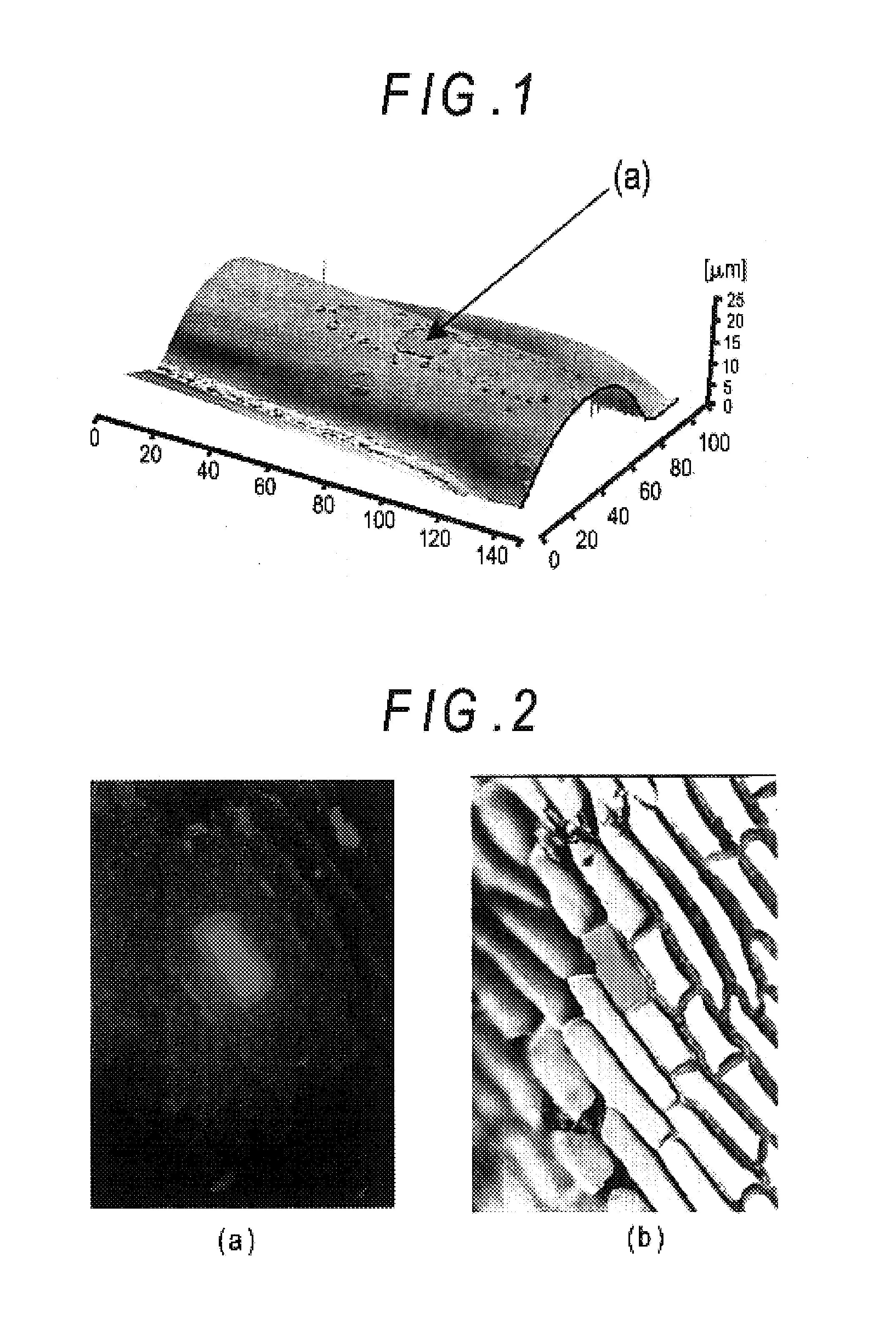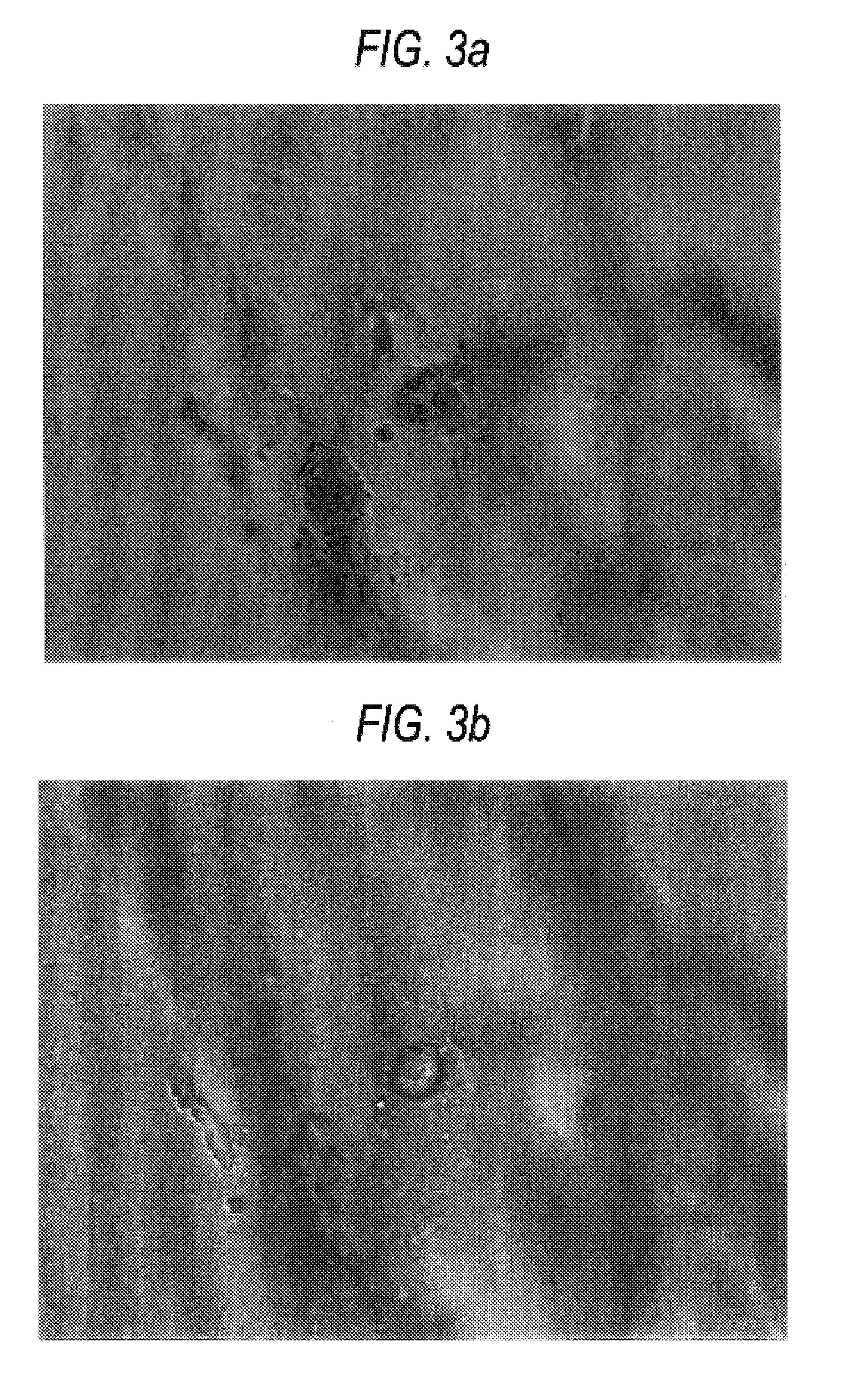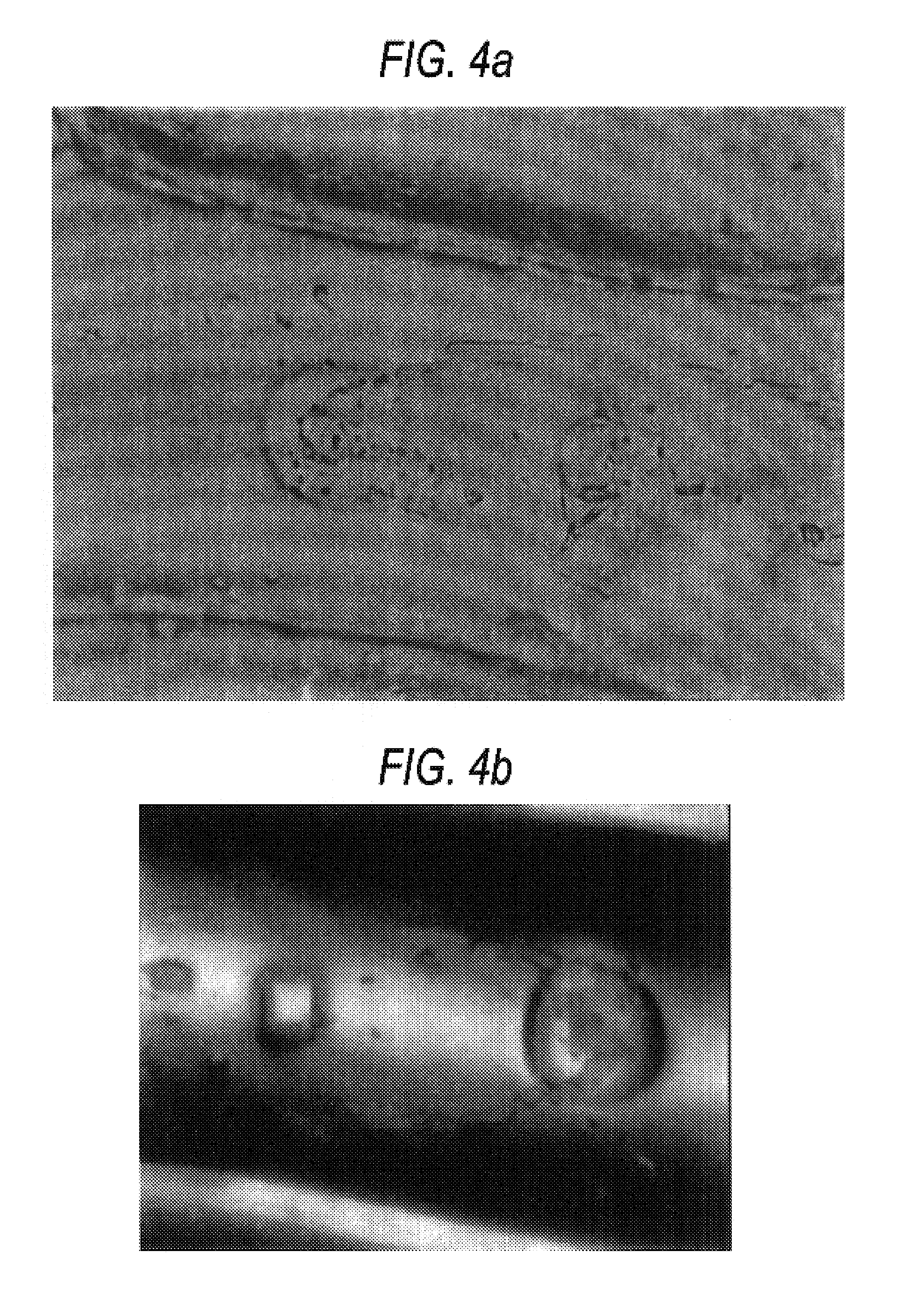Method for introducing foreign matters into living cells
a technology for living cells and foreign matter, applied in the field of methods for introducing foreign matter into living cells, can solve the problems of difficult introduction of foreign matter into a specified one cell of a specific tissue, and the expected dedifferentiation or redifferentiation system of many useful plants
- Summary
- Abstract
- Description
- Claims
- Application Information
AI Technical Summary
Benefits of technology
Problems solved by technology
Method used
Image
Examples
example 2
[0116]Next, a foreign matter was tried to be introduced into a cell by using the microinjection method after laser irradiation.
[0117]A hole, 10×10˜30×30 μm, was bored in aepidermiccell of an onion with the exima laser at an energy density of 30˜90 mJ / cm2. A calcein solution was introduced into the cell by using the microinjection through the hole bored in the laser processing. It was observed with the fluorescent microscope that the calcein solution was introduced into the cell.
example 3
[0118]Thirty days after a seed of a tobacco SR-1 plant was planted in a MS medium, a cotyledons was used and laser processed with an exima laser. The energy density of the laser was 30 to 90 mJ / cm2, and a hole was bored in a size of 10×10˜30×30 μm. A cell wall-digesting enzyme was dropped to the hole bored by the laser processing. Twenty four hours later, a protoplast cell of a mesophyll in which a cell wall near the hole was digested was isolated and observed.
example 4
[0119]Introduction of Liposome into a Cell
[0120]FITC-DEXTRAN
[0121]FLUORESCEIN ISOTHIOCYANETE-DEXTRAN (common name: FITC-DEXTRAN) commercially available from Sigma, Co., Ltd. was used. There was no limitation on the molecular weight of the FITC-DEXTRAN used.
[0122]Preparation of Liposome
[0123]Each of L-α-Dioleoyl Phosphatidyl ethanolamine and N-[1-(2,3-Dioleoyloxy)propyl]-N, N, N-trimethyl-ammonium was dissolved in chloroform at a concentration of 5 mg / ml. The resulting solutions were mixed at 200 μl:200 μl , and the chloroform was completely evaporated from the mixed solution at a low temperature under reduced pressure. A thin film of lipid was formed simultaneously with the evaporation. To this thin film was added 50 μl of a sample solution containing FITC-Dextran, which was left still on the film for 5 minutes. Then, 450 μl of a buffer solution: 10 mM Tris-HCl, pH 5.8 was added thereto, and left still for 15 minutes. The thin film of the lipid, the sample solution and the buffer so...
PUM
| Property | Measurement | Unit |
|---|---|---|
| particle diameter | aaaaa | aaaaa |
| particle diameter | aaaaa | aaaaa |
| diameter | aaaaa | aaaaa |
Abstract
Description
Claims
Application Information
 Login to View More
Login to View More - R&D
- Intellectual Property
- Life Sciences
- Materials
- Tech Scout
- Unparalleled Data Quality
- Higher Quality Content
- 60% Fewer Hallucinations
Browse by: Latest US Patents, China's latest patents, Technical Efficacy Thesaurus, Application Domain, Technology Topic, Popular Technical Reports.
© 2025 PatSnap. All rights reserved.Legal|Privacy policy|Modern Slavery Act Transparency Statement|Sitemap|About US| Contact US: help@patsnap.com



